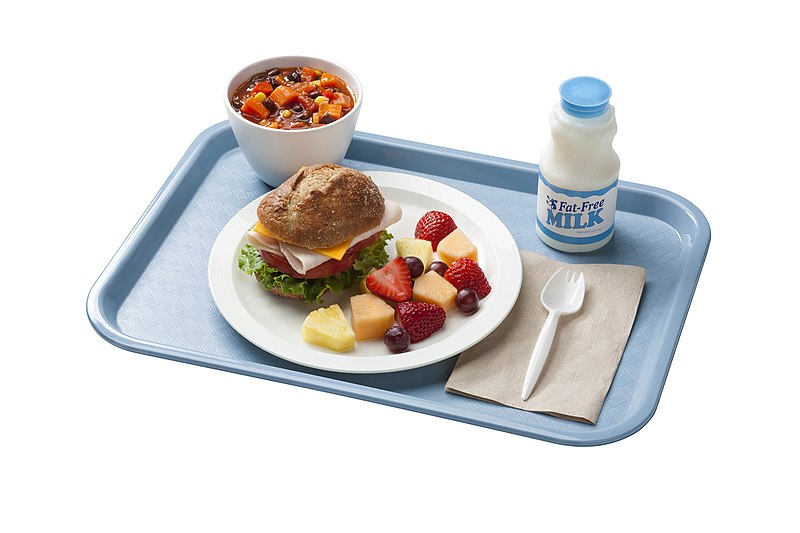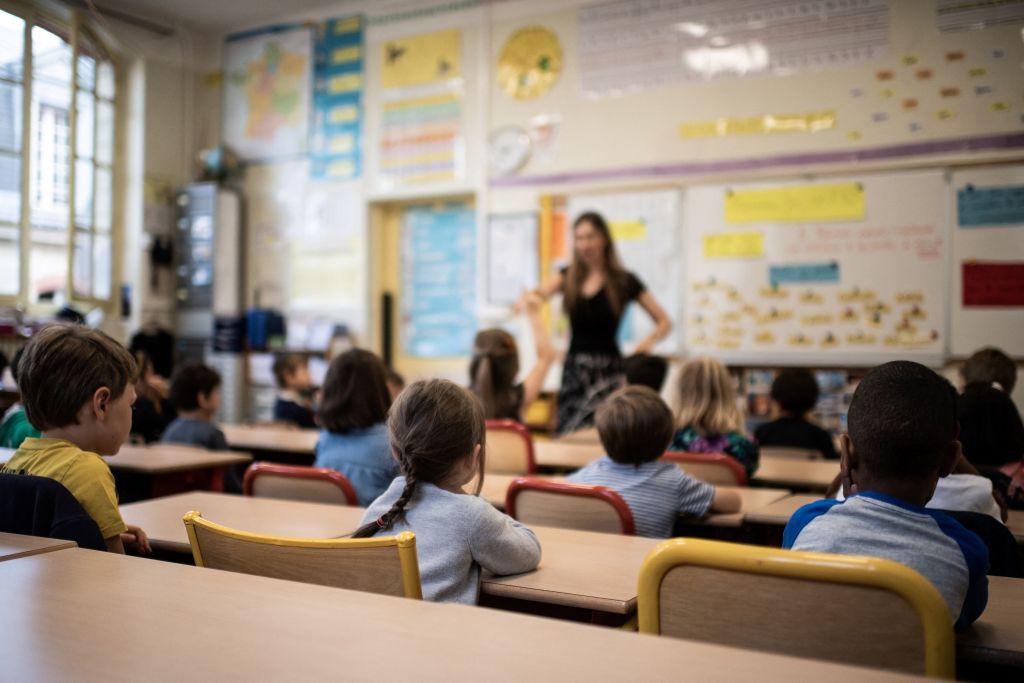The Kraft Heinz company has developed a pair of Lunchables meals slated to be served in school cafeterias starting next fall. The initiative has reignited a worthy debate over the nutrition found — and mostly not found — in school lunches.
Folks are making a big fuss over the debut of Lunchables, as if the plastic packages of cardboard coasters that pass for pizza are somehow playing sloppy seconds to the gourmet wonders our schools have been crafting up to this point. Unless things have significantly improved since I graduated, Lunchables might actually be an upgrade from what most cafeterias specialize in — mystery meat sandwiches and those limp, anemic crinkle fries that led to my lifelong loathing of ketchup.
Though it’s not news, the Lunchables debate does return our focus to a troubling truth: school lunches are awful. When my friends and I were dumping them uneaten from our trays into the trash, bad school food was a sort of rite of passage. While my classmates and I bonded over hockey-puck hamburgers, the reality is that poor nutrition has many un-funny consequences for children.
Livestrong reported on a study that found that kids who eat unhealthy lunches are “more likely to score lower on tests and have a harder time with schoolwork… Not getting enough essential nutrients at meals may lower kids’ IQ scores, memory capacities, fine motor skills, social skills and languages skills into early adulthood and beyond. A child’s poor dietary habits can even influence his sleep patterns, which may have an effect on cognitive behaviors and academic abilities.” Kids who are hungry are also more likely to have behavioral problems.
So why are school lunches so unappetizing and non-nourishing? And what can be done about it?
Reporting on the Lunchables news, the Washington Post asserts, “The meals could appeal to schools that are struggling with labor shortages in cafeterias and supply chain kinks that have limited their menu options.” According to the Food Revolution Network, funding is a top challenge, as schools participating in the National School Lunch Program don’t receive much federal help toward their lunch budgets.
The fact that schools are bad at feeding kids should tell us the government isn’t meant to be feeding our kids; that’s a parent’s job. What’s more, these are the same people who got the food pyramid “terribly wrong.”
Nonetheless, millions of kiddos are stuck in public schools, eating public school slop. Let’s look at some ways to end the cycle.
Redirect money from administrative bloat and woke nonsense
Has anyone ever heard of a public school not asking for increased funding? Or a teachers’ union asking for something that wasn’t self-serving? Why aren’t the Los Angeles teachers striking over inedible student lunches? (They’re demanding a 20 percent pay increase over two years, smaller class sizes and more counselors, among other things.)
What are public schools spending all their money on? It’s clearly not going toward high-quality ingredients or to cafeteria staff wages. An Education Next analysis of staff employed at public schools found that between 2000 and 2017, school district administrative staff increased by 74.9 percent, principals and assistant principals increased by 33.4 percent, and teachers increased by… 7.7 percent. In a 2013 report on “administrative bloat,” AEI revealed, “nationwide since 1950, the number of public school administrative and non-teaching positions has soared 702 percent.” The average salary for a public school administrator in the 2020-2021 school year, by the way, was $102,650, while a teacher’s average pay amounted to $41,770.
Why do administrators do exactly? Promote woke ideologies, for one thing. The Heritage Foundation reported in 2021 on the rise of “chief diversity officers charged with promoting diversity, equity, and inclusion” in public schools. Fox News reported last August on a California school district that’s paying “‘Woke Kindergarten’ education consultants $20,000 for ‘anti-racist’ and ‘anti-bias’ training in an elementary school.”
Expand education choice
Education choice empowers parents to use funding designated for their children’s public school education on alternatives, such as private school tuition, homeschooling textbooks, private tutors, commuting money to a charter school, and so forth. The movement is going gangbusters as more parents realize its myriad benefits, including access to more nutritious food.
Through school choice, kids who learn at home or through a co-op can access home-cooked meals. Families are also granted freedom to attend schools that prioritize healthy eating, such as the Washington Jesuit Academy, which Grist reports has increased its food budget by 30 percent “for meals prepared from fresh, mostly local ingredients in their own kitchen,” because the school’s board of directors deemed, “This is what is best for our boys.”
Prioritize kids who genuinely need lunches
The Post’s report indicates cafeterias can’t provide nutritious lunches because of the labor shortage. I’m dubious about this theory, because there was no labor shortage when I was a kid, and there were also no nutritious lunches.
If it is a labor shortage problem, though, perhaps it’s time to get folks back to work (and their kids off the free and reduced lunch program). The US Chamber of Commerce reported last month that “It’s clear that able workers are being overlooked or sitting on the sidelines,” and there are “nearly three million fewer Americans participating in the labor force today compared to February of 2020.”
The free and reduced lunch program also has a history of abuse and little oversight. Requiring proof of income would put more money in schools’ budgets to buy healthy food.
Establish school gardens
The benefits of time spent in nature are abundant. Working in a garden is especially advantageous, as kids learn about nature, work with their hands, discover a life skill, and get away from the damn screens. Every school should have a garden, at least, and preferably a greenhouse, too (check this out!). I’m not going to demand a slaughterhouse, but why not a chicken coop? “Supply chain kinks” would disappear, and I don’t know about you, but I’d rather my tax dollars go toward paying for a full-time school gardener/farmer to provide fresh, nutritious food for children than to a “diversity officer” who feeds them racist rhetoric.

























